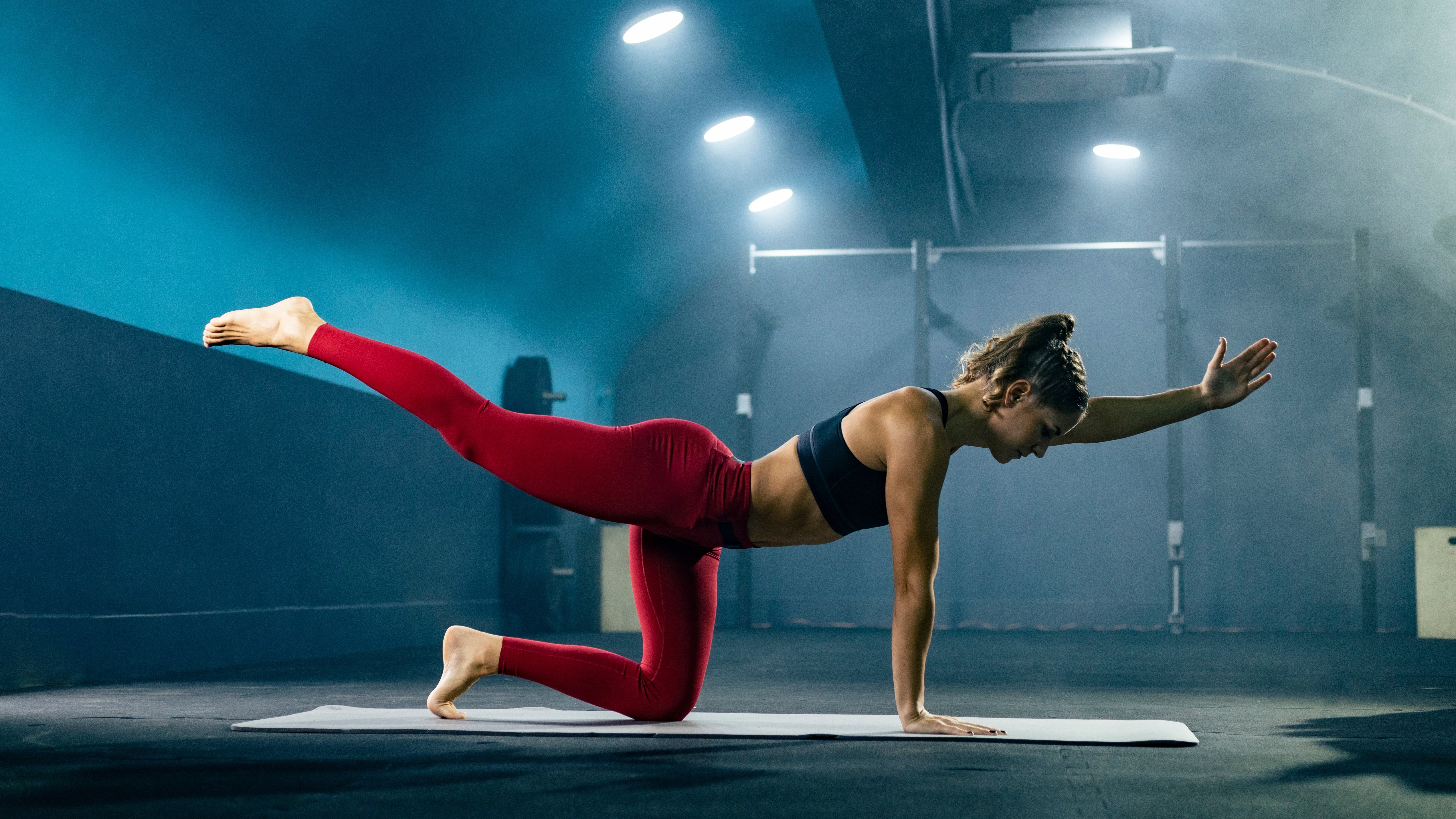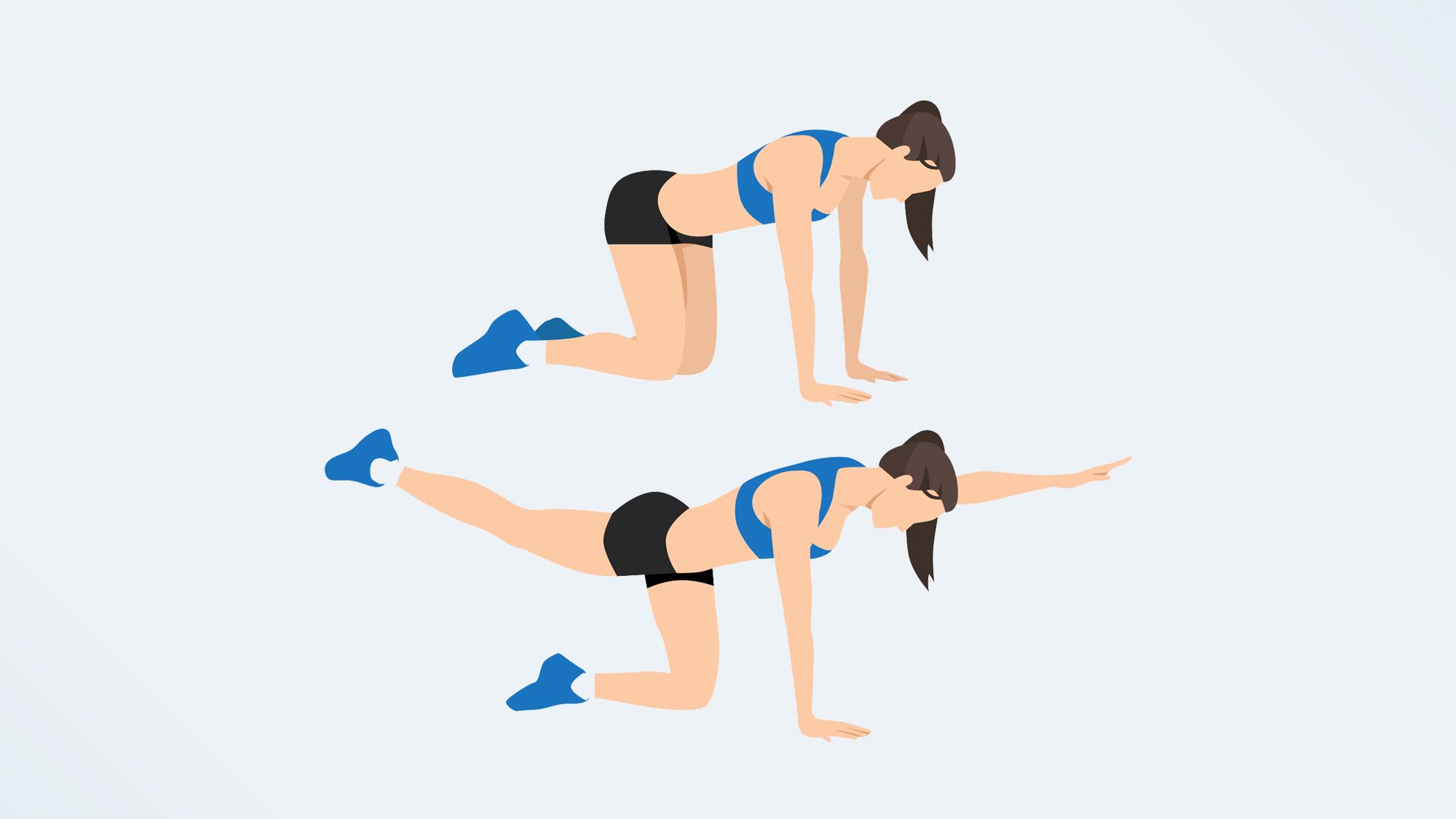Bird dog exercise — what is it, and how does it help build core strength?

When it comes to working your abdominal muscles, not all exercises are created equal. One exercise that gets you an awful lot of bang for your buck is the humble bird dog, named after the position a hunting dog makes when it has located a bird — muzzle forward, leg raised. But how do you do the exercise, and what are the benefits of adopting this canine stance? Read on to find out more.
The bird dog might not look especially complicated, but it’s one of the best ab exercises out there when it comes to working your core. Unlike ab exercises where you lie on your back, with a bird dog you’re on all fours, forcing your stabilizer muscles to work hard as you move in the pose.
How to do a bird dog

Let's start by taking a look at how to do a bird dog with the correct form:
- Begin on your hands and knees, in what is known as tabletop position — wrists directly in line with your shoulders and knees in line with your hips
- From here, extend your left arm straight ahead and your right leg behind you. Engage your core and concentrate on maintaining a flat back. You should be looking down at the floor.
- Hold the position briefly, then return to the starting position. This is one rep.
- Start off with 10 reps, then repeat the move with the other arm and leg. Do two more sets on each side.
Remember, the key here is to move slowly, and with control. If you attempt to move too quickly, you’ll have a hard time staying steady, and you’re likely to wobble.
What muscles does a bird dog work?
The bird dog is essentially a core exercise, but it’s a sneaky one, in that it works a range of muscles, including the erector spinae, which extend from the neck along the full length of the spine; the glutes; and the rectus abdominis muscles, the muscles we are talking about when we refer to the "six-pack." In addition, it works the hamstrings, the trapezius muscles in your upper back, and the deltoid muscles, which form the rounded shape of the shoulder.
Bird dog: Common form mistakes
Lifting your legs too high
As you lift your leg out and back during the bird dog, avoid jerking your leg too high — there should be a straight line from your outstretched fingers, along your back, and to the heel of your foot. Squeeze your glute as you lift your leg to engage the muscle as you move your leg. Make sure there isn’t an arch in your back.
Letting your pelvis rotate
In order for this exercise to work, your core should be doing a lot of the work. Think about keeping your pelvis stable, with your two hip bones facing your exercise mat. Don’t let your hips drop or wobble from side to side as you lift and lower each leg. Don’t let your back sag as you move, think about engaging your core throughout.
Get instant access to breaking news, the hottest reviews, great deals and helpful tips.
Not engaging your core
Like all of the best ab exercises, it’s important to think about engaging your core during this move. Think about sucking your belly button into your spine, and keeping your abs braced throughout.
Moving too quickly
Like a forearm plank, the bird dog works by holding a static position — it’s an anti-rotation exercise. Be sure not to rush through the move, pause at the top, with an arm and leg extended, and hold here for a few seconds before lowering back to your starting position.
Bird dog: Variations to try
Weighted bird dogs
To up the ante of this exercise, simply add weight by holding one of the best adjustable dumbbells in each hand as you raise your arm, or strapping a pair of the best ankle weights around your ankles.
Bird dog crunches
For a bird dog crunch, once you are in the bird dog position, with your arm and the opposite leg extended, crunch your elbow to touch your knee underneath your body, then extend them back out, before lowering back to your starting position.
Bird dog plank
Finally, to really challenge your core, do a bird dog from a high plank position, with your wrists stacked underneath your shoulders, and your core engaged. From here, raise one leg and lift the opposite arm out in front of your body. Hold here, then return to the high plank position and repeat on the opposite side.
More from Tom's Guide
- I did 100 bird dog crunches every day for a week and here's what happened
- I did 50 bird dogs a day for a week - here's my results
- Forget sit-ups — this no-equipment ab workout blasts your deep core

Jane McGuire is Tom's Guide's Fitness editor, which means she looks after everything fitness related - from running gear to yoga mats. An avid runner, Jane has tested and reviewed fitness products for the past five years, so knows what to look for when finding a good running watch or a pair of shorts with pockets big enough for your smartphone. When she's not pounding the pavements, you'll find Jane striding round the Surrey Hills, taking far too many photos of her puppy.
